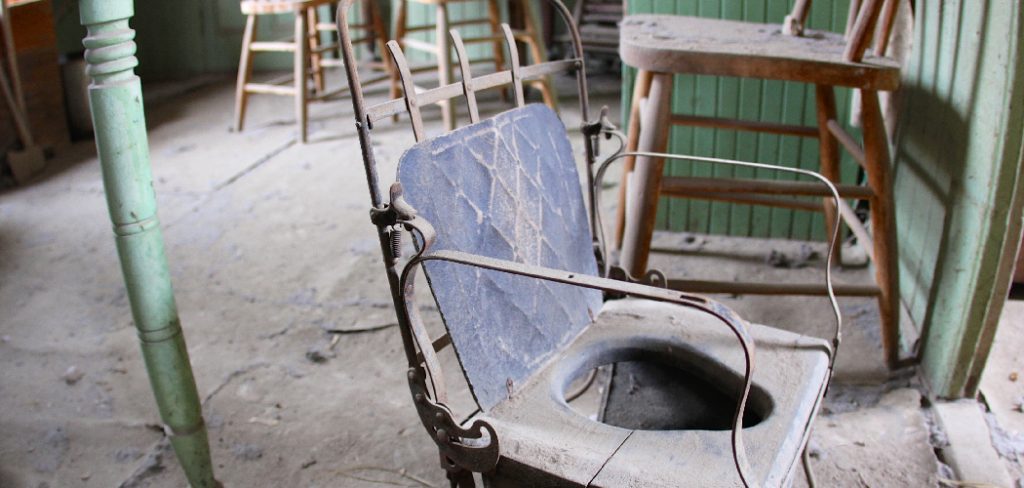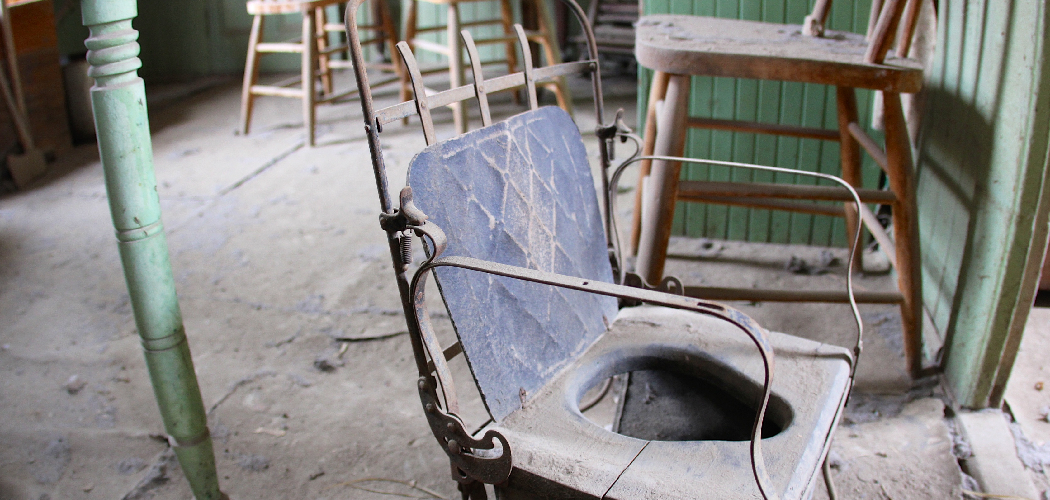A commode chair is an essential piece of equipment for individuals with limited mobility, providing convenience and support for daily hygiene needs. However, maintaining proper cleanliness is crucial to prevent the spread of bacteria and ensure the safety and comfort of the user.

This guide on how to sanitize a commode chair will walk you through the steps to effectively sanitize a commode chair, helping to uphold hygiene standards and extend the lifespan of the equipment.
Why is Sanitization Important?
Sanitization is the process of reducing or eliminating germs, bacteria, and other harmful microorganisms from a surface. It is crucial for any equipment that comes into contact with bodily fluids, such as a commode chair. This includes feces, urine, and vomit, which can contain various pathogens that could lead to infections or illnesses if not properly sanitized.
In addition to protecting the user’s health, proper sanitization also helps prevent the spread of infections to others who may come in contact with the commode chair. This is especially important in healthcare settings and shared living spaces.
6 Step-by-Step Guides on How to Sanitize a Commode Chair
Step 1: Prepare the Necessary Materials
- Rubber Gloves
- Disposable Wipes or Paper Towels
- Diluted Bleach Solution (1 Part Bleach to 10 Parts Water)
- Spray Bottle or Bucket
Step 2: Remove Any Soiled or Disposable Parts
Start by putting on rubber gloves to protect your hands. Carefully remove any soiled or disposable parts of the commode chair, such as liners, disposable cushions, or bedpans.

Dispose of these items properly in a sealed trash bag to minimize exposure to germs and odors. If the commode chair has reusable parts, set them aside for thorough cleaning later.
Step 3: Prepare the Bleach Solution
To prepare the bleach solution, mix 1 part bleach with 10 parts water in a bucket or a spray bottle, depending on your preference. Ensure the mixture is well-combined and is prepared in a well-ventilated area to avoid inhaling strong fumes.
Use this solution promptly, as its effectiveness diminishes over time. This cleaning solution will be used to disinfect the commode chair thoroughly.
Step 4: Disinfect the Commode Chair
Spray down all surfaces of the commode chair with the diluted bleach solution. Pay special attention to areas where bodily fluids may have come into contact, such as the seat, armrests, and handles. Use a clean cloth or sponge to wipe away any visible dirt or grime while also spreading the solution evenly.

Allow the bleach solution to sit on the surfaces for at least 3 minutes to effectively disinfect. After 3 minutes, wipe down all surfaces again with a clean cloth or sponge to remove any remaining solution. Rinse the commode chair thoroughly with water and dry with a clean towel.
Discard any remaining bleach solution and rinse out your spray bottle or bucket before storing it away. Dispose of used rags or sponges in a plastic bag and tie them tightly before throwing them away.
Step 5: Disinfecting the Commode Chair’s Cushion
The cushion of the commode chair can also harbor bacteria and other germs, especially if it is used frequently. To disinfect the cushion, follow these steps:
First, remove the cushion from the commode chair.
Using a disinfectant spray or wipes, thoroughly clean and wipe down both sides of the cushion. Allow the disinfectant to sit on the cushion for at least 5 minutes. After 5 minutes, use a damp cloth to wipe away any remaining solution. Let the cushion air dry completely before placing it back onto the commode chair.

Step 6: Regular Cleaning and Maintenance
Regularly cleaning and maintaining your commode chair is essential for both hygiene and durability. Here are a few tips for keeping your commode chair in top condition:
- Wipe down the entire chair with a mild soap and water solution at least once a week.
- Inspect all moving parts, such as brakes and wheels, to ensure they are working properly.
- Tighten any loose screws or bolts.
- Check the rubber tips on the legs of the commode chair to ensure they are securely in place.
- If any part of the chair becomes damaged or worn out, replace it immediately to avoid potential accidents or discomfort.
Following these simple steps on how to sanitize a commode chair can help prolong the life of your commode chair and ensure it continues to provide you with safe and comfortable support.
Do You Need to Use Professionals?
In most cases, maintaining and sanitizing a commode chair can be done by following the simple steps outlined above. However, if you notice significant damage, such as structural issues, or if the chair requires complex repairs, it might be best to consult a professional. Professional technicians can assess the condition of the chair and provide proper repairs or replacements to ensure your safety.
Additionally, if you are unsure about the correct cleaning methods or materials to use, a professional caregiver or healthcare provider can offer advice and assistance tailored to your specific needs. Prioritizing professional help when needed can help maintain the chair’s functionality and extend its lifespan.
Safety Tips
- Always ensure the commode chair is placed on a flat, stable surface to prevent tipping over.
- Avoid exceeding the weight capacity specified by the manufacturer to maintain stability and durability.
- Make sure all locking mechanisms, such as those on adjustable legs or wheels, are secure before use.
- Use non-slip rubber mats or pads if the chair is placed on smooth or slippery floors.
- Regularly inspect the chair for signs of rust, cracks, or other wear and tear that could compromise its safety.
- If the commode chair has wheels, always lock them during use to prevent unintended movement.
- Provide assistance when necessary, especially for individuals with limited mobility, to ensure safe transfers to and from the chair.
- Ensure that the chair is positioned close enough to a sink, toilet, or shower for easy access.
- Use appropriate transfer techniques, such as using a gait belt or grab bars, when helping individuals from the commode chair to other surfaces.

As with any medical equipment, it is important to properly maintain and clean the commode chair to ensure its safety and effectiveness. Regularly wipe down all surfaces with disinfectant wipes or spray and allow them to fully dry before use. If there are any detachable parts, such as armrests or seats, make sure they are thoroughly cleaned as well.
Frequently Asked Questions
Q: What is a Commode Chair?
A: A commode chair is a piece of medical equipment designed to assist individuals who have difficulty accessing standard bathroom facilities. It typically consists of a seat with a built-in opening, a removable bucket for waste collection, and supportive features such as armrests, adjustable height, and wheels for mobility.
Commode chairs are commonly used in home care, hospitals, and rehabilitation settings to enhance safety and independence for those with limited mobility or balance issues.
Q: How Often Should I Sanitize My Commode Chair?
A: Regular sanitization of a commode chair is essential to maintain hygiene and prevent the spread of bacteria or infections. Ideally, the chair should be cleaned after every use, paying special attention to the seat, bucket, and any surfaces that come into contact with waste. A thorough disinfection process using appropriate cleaning products should be carried out daily or as needed based on usage. For best practices, always follow the manufacturer’s cleaning instructions and wear gloves while sanitizing to ensure safety and cleanliness.
Q: Can I Use Regular Household Cleaning Products to Sanitize My Commode Chair?
A: While regular household cleaning products can be effective for basic cleaning, it is important to ensure that the products you use are safe for the materials of the commode chair and are capable of eliminating harmful bacteria and viruses. Look for disinfectants labeled as hospital-grade or those with proven germicidal properties.
Avoid abrasive cleaners or harsh chemicals that may damage the surface or components of the chair. Always follow the product instructions and rinse thoroughly to remove any residue. For added safety, test any new cleaning product on a small, inconspicuous area before full application.
Q: What Should I Consider When Choosing a Disinfectant for My Commode Chair?
A: When selecting a disinfectant for your commode chair, it’s important to prioritize both effectiveness and material compatibility. Opt for disinfectants that are specifically labeled as effective against a broad spectrum of pathogens, including bacteria, viruses, and fungi, to ensure maximum hygiene.
Additionally, check that the product is safe to use on the types of materials your commode chair is made from, such as plastic, metal, or padded surfaces. Avoid products containing harsh chemicals like bleach unless confirmed safe for the chair, as they can cause corrosion or deterioration over time. Always read the manufacturer’s recommendations for cleaning and disinfecting to ensure you select the most suitable and safe product.
Conclusion
Proper care and maintenance of your commode chair are essential for ensuring its longevity and hygienic use. By sanitizing the chair regularly and using appropriate cleaning products, you can create a safe and comfortable experience.
Always follow the manufacturer’s guidelines on how to sanitize a commode chair and take extra care with any specialized materials. A clean and well-maintained commode chair contributes significantly to overall health and well-being.

